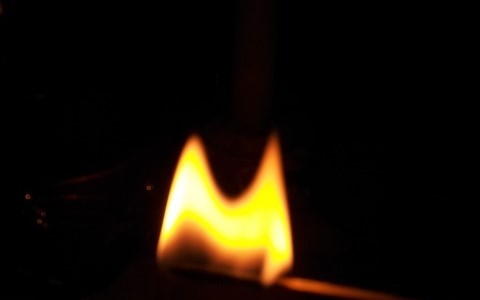Timber is a ubiquitous favourite in construction. Boasting both durability and unmatched aesthetics, it’s been employed as a building staple for literally thousands of years.
And while it can certainly take a punishing from the elements, as with any material, it can be adversely affected by extreme exposure to heat.
As the British summer approaches, we’ve taken a look at how wood reacts to heat and explore the most popular options for protecting timber from excessive warmth.

The Science Bit
Since the first microscopes were invented in the late 16th century, scientists have been able to delve deep into the tiny building blocks that make up matter.
Every material has more going on deep inside that can be discerned by the naked eye and wood is no different. Despite appearing to be a solid material – timber is made up of atoms that are far from stationary.
When this system of atoms is subjected to energy, like heat, the movement speed of these components increases, hastening internal reactions. The configuration of the atoms determines how they react to this.
This is most easily illustrated in the reactions of water. If we start with ice and add sufficient heat, the atoms within will vibrate until their configuration breaks down – turning into a liquid.
If we continue to add heat, these atoms will move quicker and quicker until they break free from the forces holding them together in their liquid state – flying free and turning into a gas.
How This Works In Wood
When timber is subjected to heat, it expands. This process is known as thermal expansion and can cause warping, swelling and potentially shrinkage.
As a hardy natural substance, trees have evolved to be resistant to this and can typically take temperature changes within their stride. How well it can cope with these changes depends on the type of wood, its species and factors like grain direction. Its natural resilience can also be further bolstered by subjecting it to a range of treatments.
Wood can perform much better under heat stress than several other materials that you might consider to be hardier. For instance, steel and aluminium can be especially vulnerable to dimensional changes when subjected to excessive warmth.
Moisture
All wood contains a trace of moisture within, which plays a key part in determining how strong and dense the wood is. Even the most highly-treated wood will retain some moisture and exposure to heat, as well as changes in the moisture content of the surrounding environment, can prompt adverse reactions that precipitate shrinkage, warping or swelling.
Timber is what’s known as a hygroscopic material – in that it absorbs and expels water from its surrounding environment until it reaches a state of equilibrium.
As such, wood located in humid locations will be vulnerable to expansion, while timber exposed to an excessively dry climate can release exorbitant amounts of moisture, leading to shrinkage.
Protection
In addition to wood’s natural hardiness, there’s a number of ways to cut down on heat and moisture-related issues.
Weapon of choice: Some species of woods are better than others at handling changes to moisture in the surrounding environment. Given the sheer variety on offer, it wouldn’t be practical to list the pros and cons of each, but if you’re a TRADA member – we’d recommend checking out their great resources on this front.
Climate Control: From cutting to treatment to arriving on site, it’s vital to ensure you store timber properly, with a view to reducing the amount of environmental stresses it’s exposed to.
We’ve covered this in more detail in previous blogs, but some key things to consider include:
- Where you store your timber
- How you cover it
- Taking special steps to protect high-risk items like frame panels and rafters
- Minimising the contact that sheets have with the ground and keeping them covered until they’re ready for use.
The same principles apply when timber reaches its final destination. Limiting the amount of thermal stress wood is put under can significantly reduce the rate of moisture related issues.
Treatments: Timber treatments have been around for centuries and cutting edge technologies are regularly employed to boost the natural resilience of wood.
While wood destined for interior use in the UK is unlikely to be subjected to high levels of thermal changes, timber used for exteriors can benefit from a range of treatments to slow the movement of moisture.
Some of the most popular options in this regard include:
Finishes: Applying the right kind of finish can greatly slow the movement of moisture, but it’s important to store and apply these correctly – as they themselves can be vulnerable to temperature changes before and immediately after application.
Resting: Before applying timber, giving it a chance to acclimate to the climate of where it’ll be situated will reduce the possibility of problems once it’s in place.

Kiln-Drying: This serves to reduce the internal moisture content of the wood and brings a range of benefits. While we’ve covered this in more detail in our guide to the kiln drying process some top-level improvements include:
- Better suitability for finishes
- Enhanced insulation properties
- More strength
- Decreased weight
Chemical treatments: These are designed to alter the internal structure of wood, making timber better suited for a variety of challenging roles.
For instance, Accoya, which is treated using acetic anhydride, has been proven to benefit from better durability and dimensional stability – even in the face of excessive heat stress.
Questions?
Hopefully the above serves as a decent overview of the relationship between heat and timber, but if you’ve got any further questions – be sure to get in touch via Twitter.
And if you’re looking for timber that’ll stand up to the elements, be sure to check out our product rangeor order some free samples today.
